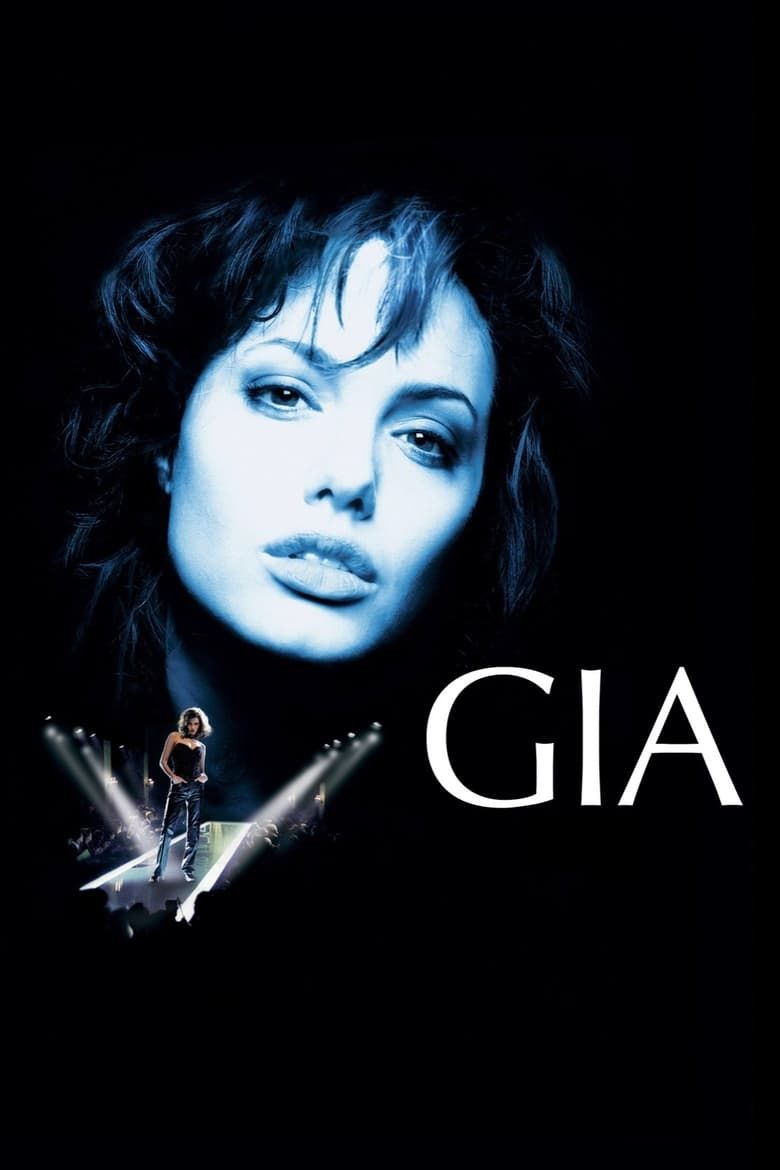If Angelina Jolie’s portrayal of Maria Callas in Maria made you cry, just wait til you get your hands on the most heartbreaking performance of her career. One of the most compelling and tragic biopics of its era, HBO’s 1998 made-for-TV film Gia chronicles the meteoric rise and fall of America’s first supermodel. Jolie gives an electric, career-defining performance as the titular Gia Marie Carangi, portraying the haunted supermodel with brutal honesty.
Carangi’s story is a heartbreaking one — she was widely considered the first supermodel of her kind, paving the way for models like Cindy Crawford (who was nicknamed Baby Gia), but her career was short-lived, declining when the model developed a heroin addiction that led to her death due to AIDS-related complications at age 26. Also starring a pre-teen Mila Kunis, as well as Faye Dunaway and Elizabeth Mitchell, Gia unfolds like a tragic fairy tale, loudly demanding that its audience never looks away, not even for a second.
'Gia' is a Heartbreaking True Story
Hyper-stylized and shot almost like a documentary, Gia is interspersed with narration taken from the real Gia Carangi's journal, and features mock interviews wherein the characters in Gia's life speak directly to the camera, offering their often-conflicting commentary on the events of her life as they unfold. Gia is both intimate and arresting, offering an unflinching look at the tragedy of Carangi's life. The film draws us in using the glamor of her rise to fame, then sends us crashing back to earth as her addiction takes hold, refusing to sanitize Gia’s struggle. Like any biopic, Gia is embellished, but most of the film is grounded in reality, drawing on first-hand accounts from those who knew Gia.
Gia begins early in the model's life — specifically, on the day her mother (Mercedes Ruehl) walks out on a young Gia (Mila Kunis) and her family, which the film holds up as the primary source of Gia's inner turmoil. We're then quickly introduced to a teenage Gia, who uses a combination of bluster and punk sensibility to continue masking the pain of her mother's abandonment, but it's not long before she's discovered by the legendary Wilhelmina Cooper (Faye Dunaway) and the film (and her modeling career) begins in earnest. "Just be yourself," Wilhelmina tells Gia the night before her first photo shoot, to which the burgeoning model replies "What is that?", in a scene that essentially acts as the film's thesis. Beneath the brash exterior, beyond the wild hair and the sailor's mouth—Gia makes clear—is a very young girl, nursing a very deep wound.
Gia spends the film searching for love and belonging—from a pseudo-boyfriend (Eric Michael Cole) she refuses to sleep with to a surrogate mother in Wilhelmina—and eventually finds it in makeup artist Linda (Elizabeth Mitchell), whom Gia single-mindedly pursues from their first meeting. Gia's relationship with Linda (based on Sandy Linter, who dated the real Gia on-and-off) is the heart and soul of the film, and Gia as a film is undoubtedly queer, having broken ground as one of few films to unabashedly portray a queer relationship without sensationalism. Gia and Linda's relationship is as beautiful as it is doomed, and the film makes you desperately root for their love despite knowing the eventual outcome. Everything about their relationship is portrayed as gentle and kind, even as the roots of Gia's addiction take hold and Linda's belief in their love wavers. This is not an example of the dreaded "bury your gays" trope, but it is a heartbreaking portrayal of the toll addiction takes on even the most loving and generous relationships.
Angelina Jolie is a Force to be Reckoned with in 'Gia'
 Image via HBO Pictures
Image via HBO Pictures
Despite the dizzying heights of her fame today, Angelina Jolie's career had not fully picked up before starring in Gia, even after winning a Golden Globe for her role in 1997's George Wallace, and the film is widely considered to have put the actress on the map. It's hard to imagine anyone else taking on the role, because Jolie as Gia Carangi is mesmerizing, refusing to take her foot off the gas for even a second. Effortlessly cycling through Gia's pain, enthusiasm, anger, hope, and desperation, Jolie poured herself into the role and even considered quitting acting once filming had wrapped, stating "I felt like I'd given everything I had." Her unbridled commitment to the role earned Jolie her second consecutive Golden Globe, and even a cursory watch of Gia demonstrates why. Jolie plays Gia with bottomless empathy, an angle from which the film also approaches Gia's story. Those who have struggled with addiction will enjoy that Gia does not look down on Carangi and her addiction; rather, it attempts to empathize with her position, drawing parallels between her dependency on drugs and dependency on her loved ones. Carangi is not demonized for her addiction. Instead, the film makes it quite clear that she and her image are a drug for the industry, an addictive substance to be consumed and ultimately discarded in favor of the next best thing.

Related
15 Movies That Accurately Portray Drug Addiction
"Choose life. Choose a job. Choose a career. Choose a family."
As much as Gia has its pros, it has its fair share of cons. For a film that spans the beginning and end of Carangi's modeling career, it has remarkably little to say about how Carangi herself was impacted by the industry, instead choosing to focus on the effects of the trauma inflicted during her childhood. It is, of course, easy to see how deep-seated abandonment issues and a lack of a sense of self would lead Carangi to begin to self-medicate. However, Gia offers no real examination of the seductive and corrupting nature of fame, and even less is said about how the industry exploits its models, how they might be driven to eating disorders and drug abuse and burnout by the culture it fosters. Gia features opportunistic characters that represent the very worst of the fashion industry but offers no concrete commentary on those who exploited Carangi, especially at her lowest, instead leaving the audience to come to their own conclusions.
Gia’s made-for-TV status makes it a lesser known film—though it’s gained a cult following in the years since its release—and this unfortunately means that Gia Carangi’s story is lesser-known, despite its enduring relevance. Gia is certainly not an easy watch, and takes the audiences through the highs and lows and Carangi's life, highlighted by the film's haunting, jazz-heavy soundtrack, mixed with pop hits from the likes of Bowie and Billy Idol. Not for the faint of heart, and featuring a once-in-a-lifetime performance by the wickedly talented Angelina Jolie, Gia is so much more than a standard Hollywood biopic, and will leave you gasping for air as the credits roll.

Gia
Release Date January 31, 1998
Runtime 120 minutes
Director Michael Cristofer
Writers Jay McInerney
Producers David R. Ginsburg, Ilene Kahn Power, James D. Brubaker









 English (US) ·
English (US) ·